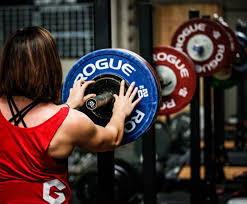What is powerlifting training?
Contents
- What is powerlifting training?
- Benefits of powerlifting training
- Is power lifting an Olympic sport?
- How do powerlifting competitions work?

What is powerlifting training?
Powerlifting is a sport consisting of three lifts: the squat, bench press, and deadlift. Powerlifting differs to Olympic weightlifting (or Oly lifting as it is sometimes called) in many ways and the two are completely different sports. In Olympic weight lifting, there are two lifts: the snatch and the clean and jerk. For both these lifts, the weights end up above the athlete's head and a lot of skill and technique is needed to succeed. In powerlifting, it is more about brute strength and there is far less technique involved. Bodybuilding, on the other hand, differs yet again as this is all about sculpting the body and the muscles. Bodybuilders often do not have much strength at all as this sport is all about aesthetics and not about power or strength. Powerlifters may end up with big muscles as a result of training but it is not the primary focus, and many powerlifters do not look classically 'athletic'.
Benefits of powerlifting training
Apart from gaining strength, there are many benefits of powerlifting. Lifting heavy weights increases bone density which in turn reduces the risk of developing brittle bones and osteoporosis later in life. It also works every muscle group in the body in compound moves which improves co-ordination and develops the large muscle groups better than isolating exercises. Increasing muscle density also burns more fat at rest and so you end up losing weight without even trying. Being stronger overall will reduce the risk of injury in other sports like running and cycling and translates well to other aspects of life like walking up stairs or hiking, for example.
Is power lifting an Olympic sport?
Powerlifting is not an Olympic sport and is often confused with Olympic weightlifting, which does feature in the games. However, powerlifting does feature in the Paralympic games. In the Paralympics, powerlifters only complete the bench press discipline, which is considered the ultimate test of upper body strength. Some athletes are able to press more than three times their body weight which is incredible impressive.
It is open to male and female athletes with the following eight eligible physical impairments:
- impaired muscle power
- impaired passive range of movement
- limb deficiency
- leg length difference
- short stature
- hypertonia (a condition in which there is too much muscle tone so that arms or legs, for example, are stiff and difficult to move)
- ataxia (a term for a group of disorders that affect co-ordination, balance and speech)
- athetosis (a condition in which abnormal muscle contraction causes involuntary writhing movements)
A range of physical disabilities, including Cerebral Palsy, Spinal Cord injuries, Lower Limb Amputation, and poliomyelitis, also meet the current minimal eligibility criteria and athletes with these conditions can compete, safely and appropriately, according to the World Para Powerlifting rules. All eligible athletes compete in one sport class, but in different weight categories. The bench press is the sport’s single discipline, with 10 different categories based on body weight. Competitors must lower the bar to the chest, hold it motionless on the chest and then press it upwards to arms length with locked elbows. Athletes are given three attempts and the winner is the athlete who lifts the highest number of kilograms.
How do powerlifting competitions work?
Anyone can enter a local or regional powerlifting competition. In order to qualify for a national or world competition, you need to achieve a certain total in your age and weight category. There are different powerlifting federations across the country and the world and these feature different weight categories. The overall governing body for powerlifting is the IPF. Results are based on what's called the Wilks score, which takes into account body weight as well as weight lifted, to make for a fairer result, as someone with a heavier bodyweight will generally be able to lift heavier than someone who is lighter/smaller. Being short is often an advantage in powerlifting as it means your levers (arms and legs) are shorter so you have less distance to move the weights. A higher body fat percentage also has this effect, but you need to find the right balance as a higher body fat percentage will also leave you with a higher body weight and therefore a disadvantage against lighter but stronger lifers. 텍사스홀덤사이트
